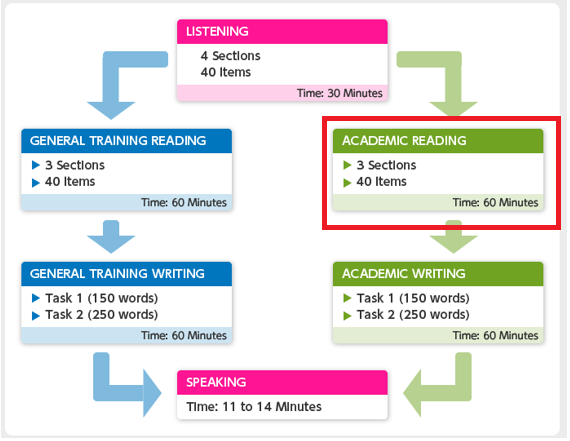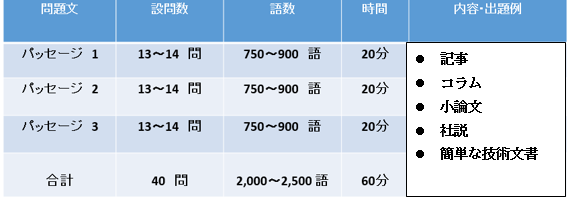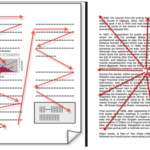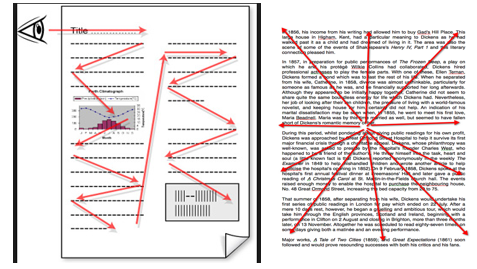▮ リーディングテストは、IELTSテストの2番目
リーディングテストは、IELTSの4分野のうち、2番目のテストです。

ここで試される能力とは、以下の2つです。
1)速く読んで、答えとなる言葉を見つけ出す能力
2) 書かれている内容を理解して、質問に的確に答える能力
3つの別々のパッセージ(課題文)を読み、60分間で合計40問に答えます。
各パッセージの長さは、 750〜900語くらいで、A4サイズ用紙で2枚弱程の文章量です。
3つのパッセージを合わると、全体で2,000〜2,500語になります。

どのパッセージから始めてもよく、60分の時間配分は自由ですが、おおよその目標としては、
1つのパッセージを20分で終わらせ次のパッセージに進むようにします。
▮ アカデミックな内容で幅広い分野
出題されるパッセージは、本や雑誌、新聞からの引用で、
専門家向けに書かれたものを、一般向け紹介するような文章です。
内容は大学、大学院レベルのアカデミックなもので、社会科学、自然科学、
環境問題、地学、生物、歴史、など幅広い分野から出題されます。
リーディングテストもほかの分野のテスト同様、先へ進むほど問題は難しくなります。
3つのパッセージのうち1つは論文形式の文章で、このパッセージが一番難しくなります。
リーディングは、日本人の平均スコアが一番高いのも関わらず、
時間が足りなくて困っている人も多いのが特徴といえます。
▮ リーディングテスト攻略3つの力
20分で1つのパッセージを読んで13〜14問の設問に解答するためには、
タイムマネジメントが必要不可欠です。
それには、基本的な「英文読解力」だけでなく、
「解答する順番を判断する能力」と「問題を分類する能力」
を身に付ける必要があります。
リーディングテストの40問は全て配点が同じです。
つまり、難しい問題よりも簡単な問題から取り掛かる方が合理的です。
そこで、「解答する順番を判断する能力」が必要になります。
また、問題の中には、パッセージ全体を問う問題もあれば、一部分だけを問う問題もあります。
そこで「問題を分類する能力」があれば、
スキミングの問題なのか、スキャニングの問題なのかがわかり、
解答に余計な時間を省けます。
この3つの力を養うことができると、どこをしっかりと読むべきか、
そしてどこを流し読みするべきかというメリハリがつくようになります。
当然解答スピードも速くなります。
▮ バンドスコアと評価基準
ほかの分野同様、リーディングテストのバンドスコアは、1から9まで0.5刻みで採点され、
4.0 / 4.5 / 5.0 / 5.5 といった点が付きます。
テストは40問から成り、1問正解につき1点が与えられます。
40問であなたが獲得した最終的な得点は、変換表を使って、
1から9までの0.5点刻みのバンドスコアに換算されます。
下に示したのは大まかな目安です。
テストによって換算は異なりますし、実際のテストが確実にこのとおりに行われるとは
断定できませんが、勉強の進み具合を測る指針として役立ててください。























